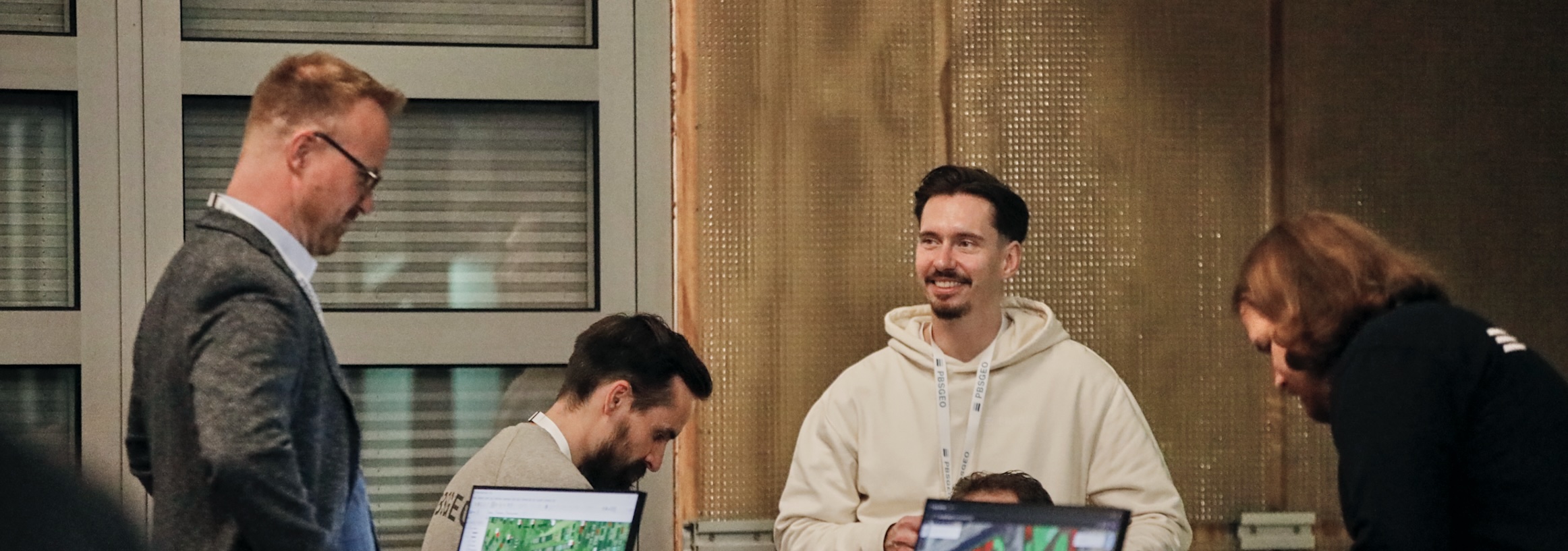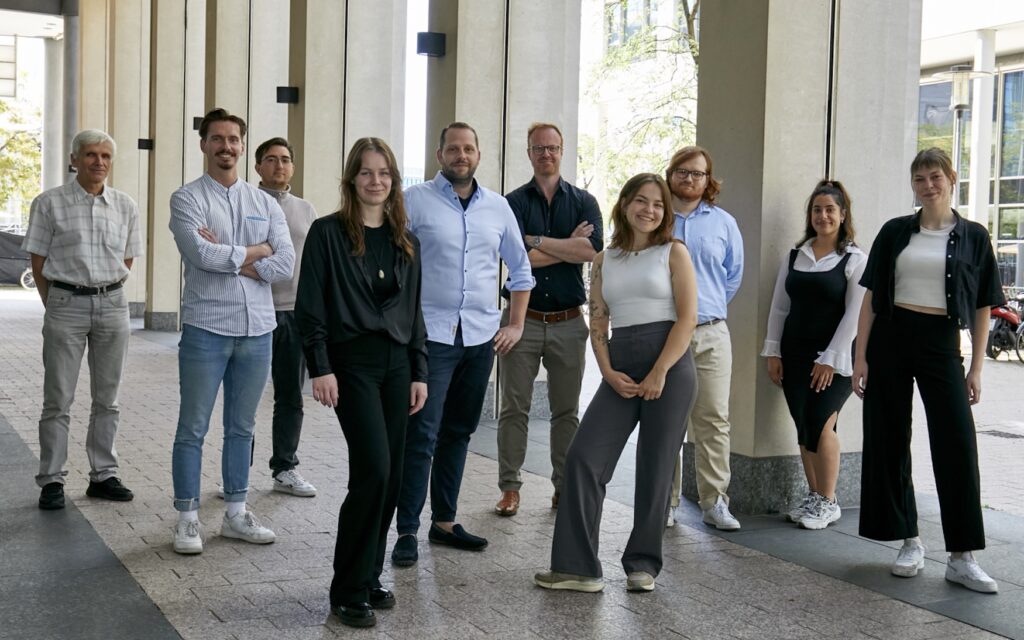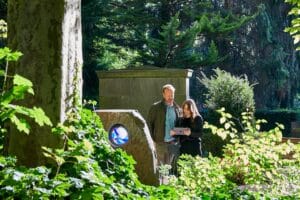Less than 20 percent of all cities and municipalities are currently in the implementation phase of digitization. The percentage is even lower in the area of cemetery digitization. The 2nd Cologne Digital Cemetery Symposium offered expert knowledge and space for networking. By Therese Backhaus-Cysyk.
“When I think of the digital cemetery, I think of …?” Most of the participants’ answers to the opening question at the 2nd Cologne Digital Cemetery Symposium were “work”, “planning” and “simplification”. However, “time”, “connection problems” and “pent-up demand” were also mentioned. Some cemeteries are already well on the way to a digital future, thanks in part to the support of PBSGEO Managing Director Stefan Schumacher and his team.
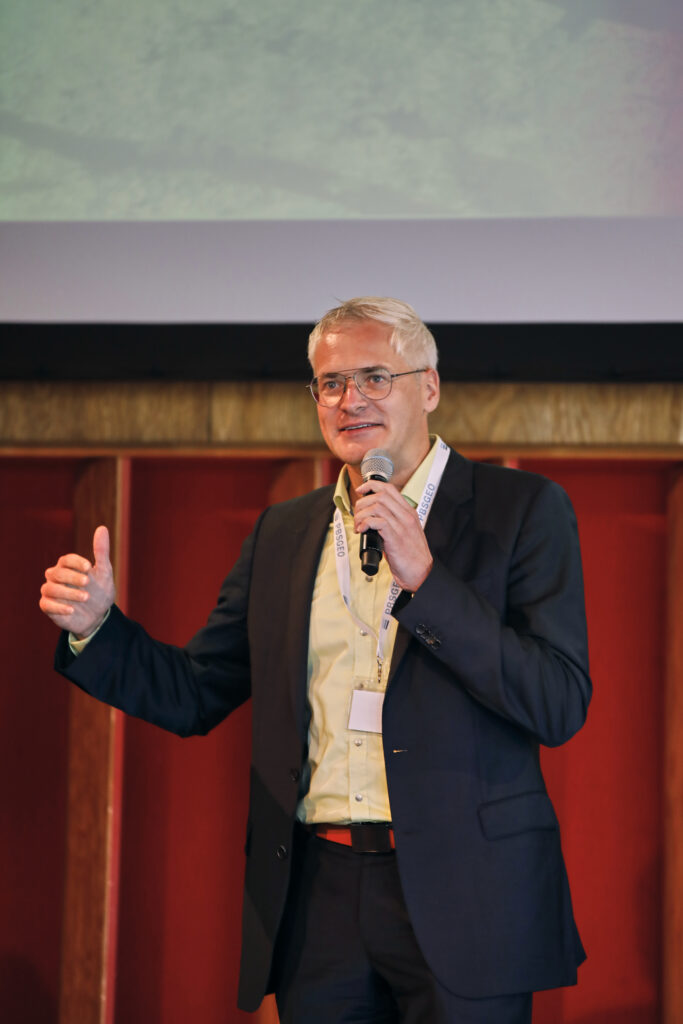
Other cemetery operators are still hesitating. In yet other municipalities, the transformation is currently on hold due to the economic situation, as was revealed in Cologne. However, all participants agreed that the digital transformation is unstoppable and many took the opportunity to network further in this field. The program also included innovative presentations, such as a look at current practice in Baden-Baden. Four pillars marked the path to the digital cemetery plan in Baden-Baden: “Orientation”, “Starting point”, “On the way” and “At the destination”. Who better to talk about an idea than someone who has already implemented it?
And so Frank Geyer, Head of the Cemetery Department at the City of Baden-Baden, spoke about his own experiences on the way to the digital cemetery map, which is called DigFried here. “In Baden-Baden, there are eleven municipal cemeteries with 25,000 occupied burial plots,” explained Geyer. “We have 1,000 burials a year and 85 percent of these are urn burials.” Geyer is in charge of 19 employees in the cemetery department, seven of whom are responsible for administrative tasks and 12 for opening and closing the graves and operating the crematorium. Only a small part of the cemetery area is maintained in-house. The majority is outsourced. “We had a 20-year-old cemetery database with grave records and hand-painted cemetery plans,” says Geyer, explaining the starting point. After internal orientation, it quickly became clear that only specialists could help on the path to digitization. “We couldn’t master the tasks with on-board resources”. So, on the one hand, the PBSGEO team came into play with its expertise. Secondly, the city’s drone provided high-resolution aerial images as background map material.
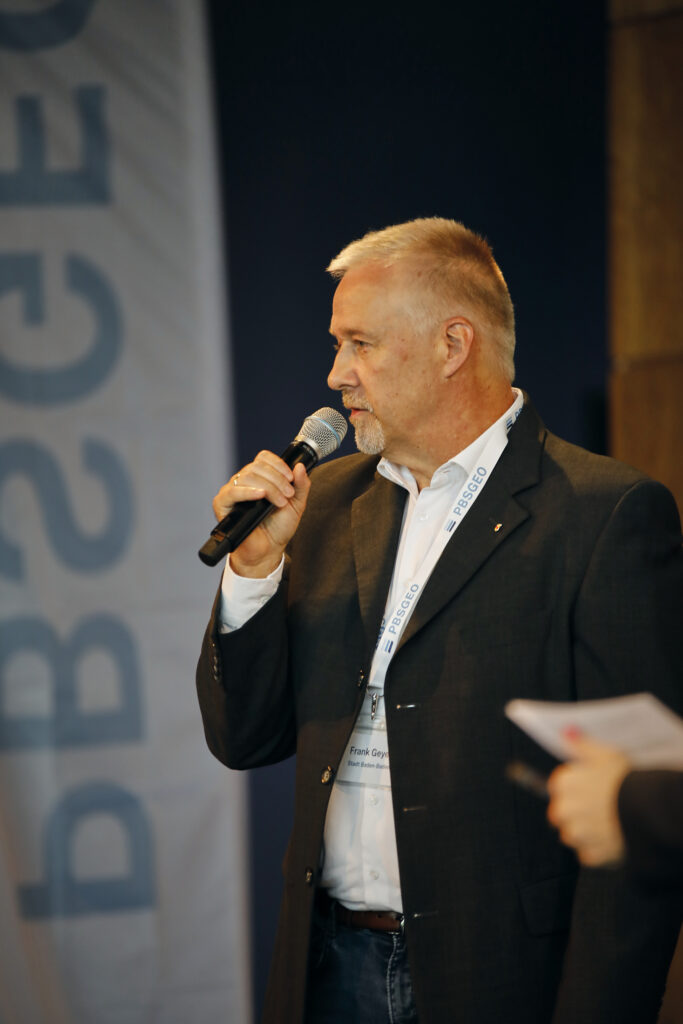
because there are many synergy effects.” – Frank Geyer.
“We had too many cooks in Baden-Baden for many years. Not only was data collection inconsistent, but data was also missing or incorrect. So PBSGEO created grave sites and linked them. First at the pilot cemetery in Baden-Oos. Subsequently, the district cemeteries were created. Geyer remembers important milestones: “We corrected 25,000 graves on our own initiative. Three teams were out and about in our cemeteries, comparing data, correcting gravesites that no longer existed or that were registered in the wrong cemeteries,” Geyer points out. The end result was a completely revised digital cemetery plan, which all employees and the trades involved can now work with very well. In the meantime, we have also designed many near-natural burial plots, which are easy to handle in a digital plan, according to Geyer’s experience. His conclusion: all those involved should be integrated into the process as quickly as possible. There was a lot of convincing to be done. There were concerns in the districts in particular, along the lines of: “Do they still need us?”. Despite the increased workload during the changeover to the new DigFried, Geyer takes a long-term view: “We are saving time and our successors will still benefit from the changeover, as there are many synergy effects.” Geyer already has the next steps in mind, such as the new citizen information system: at the entrance to the cemetery, visitors can scan a QR code to view the cemetery map. In future, online grave reservations will also be possible.
Cemetery – a complex system
Stefan Lubowitzki, Managing Director of Weiher GmbH (Freiburg), which deals with holistic cemetery development and can help optimize cemeteries thanks to its extensive network, took a different look at the cemetery. Cemeteries are a complex system. And in order to master this successfully, Lubowitzki explained the so-called seven dimensions of cemeteries in more detail and put them into context. According to Weiher, the seven dimensions include the number of graves, the area, the stay, marketing, function, time and, in the middle, economic efficiency. Nevertheless, all dimensions are interlinked and interrelated. By looking at each of the seven dimensions and five so-called keys – from flexibility and reversibility to the digital cemetery – the complex cemetery system can be successfully managed.
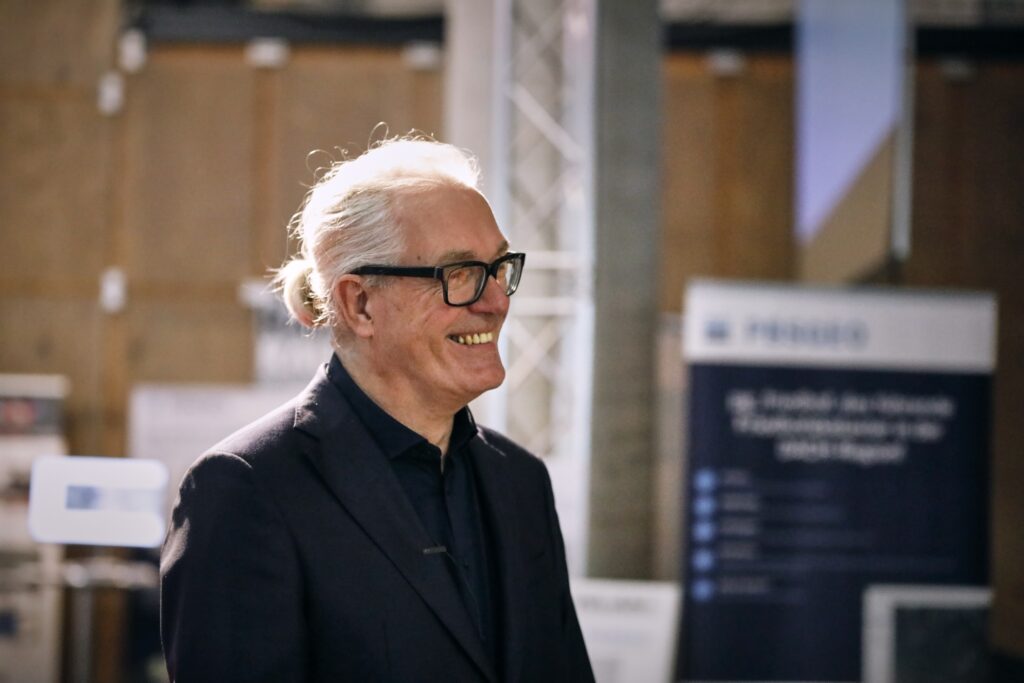
His conclusion: Lubowitzki and his team can support the cemetery operator on site, from on-site potential analysis, cemetery planning, the implementation of structural measures, the optimization of fee structures and statutes through to public relations work.
Digital visibility of cemeteries
Short, comprehensible texts, very good images and a clear structure – this is how Tobias Pehle, Managing Director of the Kuratorium Immaterielles Erbe Friedhofskultur e.V., envisions the appearance of a cemetery on its homepage. “Every cemetery operator can create a Google profile themselves!” He showed the audience at the digital symposium in Cologne a few examples of how cemeteries present themselves online. “Not to denounce mistakes, but to show where the weak points often lie. Relatives who search for funeral options online in the event of a death or in the run-up to a funeral, for example, don’t want to wade through miserably long continuous texts. Rather: “Many people want to know in advance how much care is required for the desired type of grave,” Pehle pointed out. It is also important to have a personal contact address to clarify further questions, perhaps with the note: “I’m here for you personally: just get in touch with me!”
You can read more about other lectures at taspo.de/friedhofskultur
Source: Therese Backhaus-Cysyk, Cemetery Culture, December 2024
